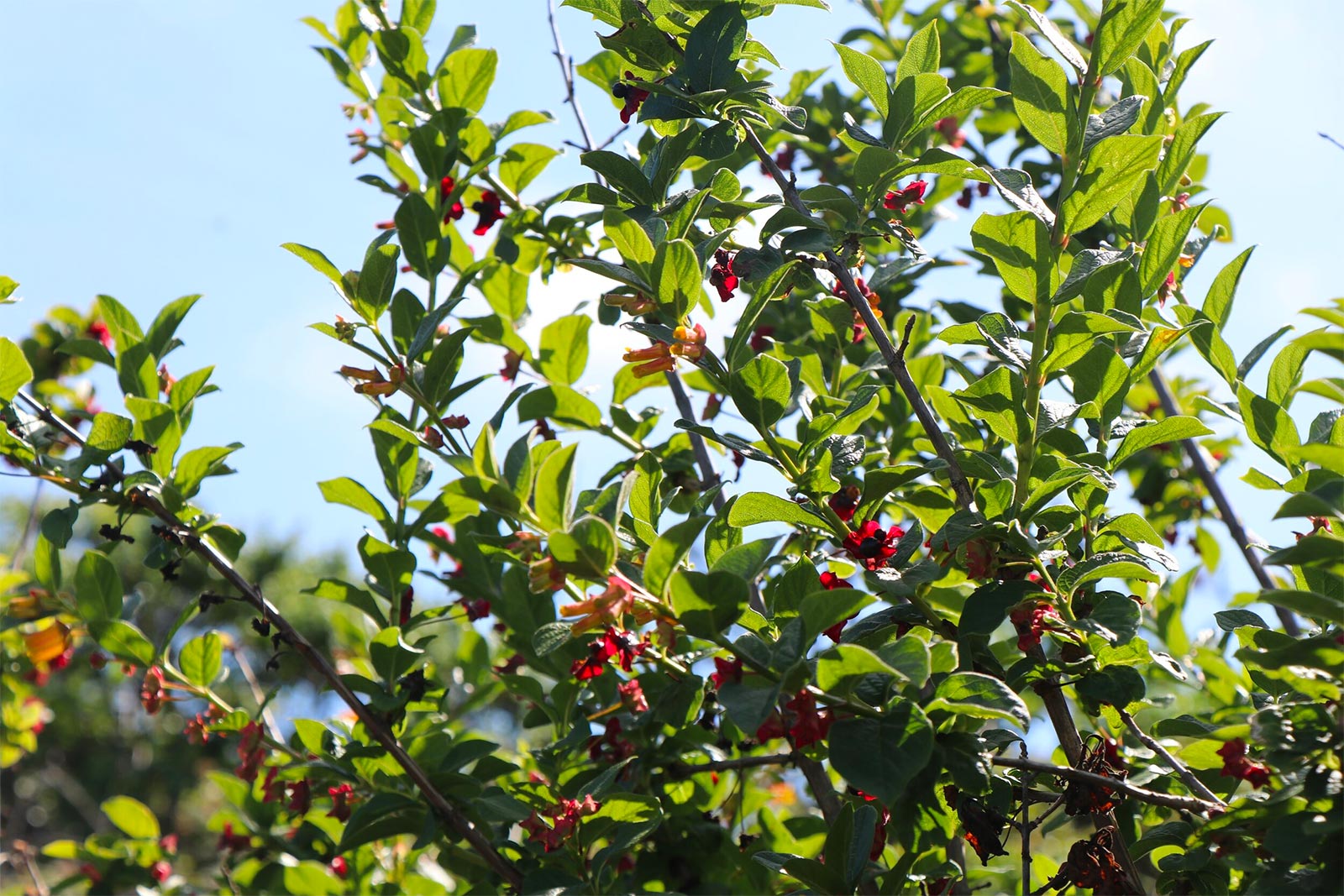Twinberry is part of the Honeysuckle Family. It can often be found in wetlands, alongside streams, and in open forests. This plant is a great “edge” species when planted between a forest and more open areas. It blooms with small yellow tubular flowers and is known for its showy pink bract surrounding shiny black fruit.
$3.50
$3.50
Out of stock
Related products
 Out of stock
Out of stock
Oregon Viburnum
Viburnam ellipticum is native to southwest Washington to central California and found primarily on the west side of the cascades. It grows 3-9ft tall in a multistemmed bush. This plant provides white cluster flowers in May and June and beautiful fall colors.
Read more Out of stock
Out of stock
Red Flowering Currant
Red Flowering Currant is an upright shrub that reaches heights of 10 feet. Beautiful pink to deep red cluster of flowers that let you know spring has arrived. Red flowering currant prefers dry to moist, well-draining soils. It will grow in partial shade to full sun.
Read more Out of stock
Out of stock
Salmonberry
This iconic PNW berry is found from SE alaska to northern California. It grows in wet woodlands and along stream banks and can handle sun to shade. It forms dense thickets that can grow 3-6 feet tall.
Read more Out of stock
Out of stock
Snowberry
This unsung hero of the plant world is versatile, elegant, and tough as nails—if you cant get something grow in a specific location, plant snowberry. This deciduous shrub is 2-6 feet tall and very adaptable to a wide range of growing conditions. It produces small pink and white flowers in the spring and clusters of showy white berries that persist through the winter. *Careful: the berries are poisonous if eaten by humans but are great for wildlife.
Read more

